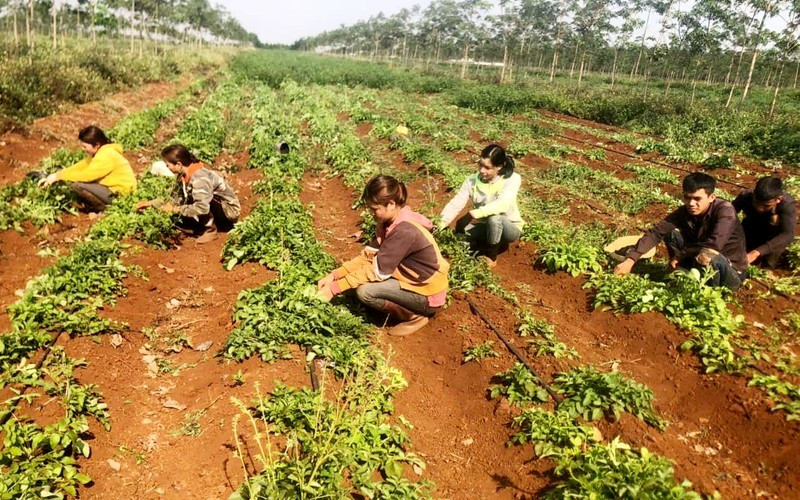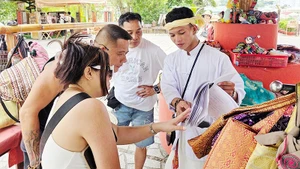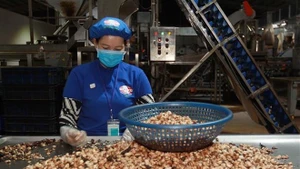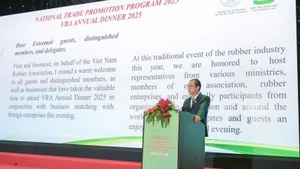With about 5,117 species of medicinal plants, Vietnam has many potentials and advantages to develop medicinal herbs into a technical and economic sector. Medicinal herbs are used for many different purposes for humans, such as the production of drugs to treat diseases, food and nutrition, beverages, and cosmetics.
In addition, medicinal herbs are also used as raw materials for the production of plant protection drugs, veterinary drugs, and drugs for aquatic and seafood products. According to Fortune Business Insights, the total value of the global herbal products market in 2021 is estimated at 230 billion USD and is expected to reach 430 billion USD by 2028.
According to the Deputy Director General of Traditional Medicine Management under the Ministry of Health Tran Minh Ngoc, the trend of using herbal medicines instead of chemical drugs is being welcomed by the whole world. Vietnam is no exception to that general trend. On the world map of medicinal herbs, Vietnam is assessed to have a diverse source of medicinal herbs. The proportion of rare and precious natural medicinal herbs is still quite abundant.
Up to now, several Vietnamese enterprises have participated in exporting many types of medicinal herbs such as cinnamon, anise, cardamom, turmeric, rosemary, and millet, but individually and with a negligible percentage. Although the total export value of cinnamon and anise has continuously increased, reaching 276 million USD in 2022, this figure is still small compared to the market share of medicinal herbs worldwide.
One of the reasons why Vietnamese medicinal herbs have a very small share of the total revenue of the global pharmaceutical market is that the majority of Vietnamese medicinal herbs are exported in the form of raw materials. In addition, there are still some percentages of medicinal plants that do not meet the prescribed quality standards.
Pharmaceutical enterprises are facing many difficulties and stiff competition. Most of Vietnam's manufacturing enterprises now import medicinal materials from China to produce their products.
In the current difficult and competitive context, to participate in the global herbal market, according to Tran Minh Ngoc, Vietnamese enterprises need to invest heavily in science and technology and varieties, to develop medicinal herbs growing areas on a large scale, to comply with the standards and regulations of the importing country.
Notably, it is necessary to form specialised, concentrated and large-scale production areas of medicinal herbs, that must be managed for traceability and product quality, according to the Good Agricultural and Collection Practices – World Health Organization (GACP-WHO) and production of organic medicinal herbs, according to international standards, standards of Vietnam's Pharmacopoeia and those of importing countries.
Besides, it is necessary to enhance communication work to raise awareness for the communities who are cultivating medicinal herbs. And step by step form a concentrated herbal production area large enough to meet the quality standards required by the importing countries.
To actively participate in the global playing field, the Ministry of Health has advised and submitted to the Prime Minister for approval, the Programme on Development of the Pharmaceutical Industry, Domestically Produced Medicinal Herbs to 2030, with a vision to 2045. Which, there are many specific policies to support pharmaceutical enterprises, such as prioritizing investment in scientific research, production of high-quality herbal medicines, and development of production of nationally branded herbal medicines. Many groups of synchronous solutions for institutions and laws were also proposed.
To support the development of the domestic medicinal herb industry, the Prime Minister has also approved the national target program on socio-economic development in ethnic minority-inhabited and mountainous areas in the 2021-2030 period. In particular, sub-project No 2 of the first phase (from 2021-2025) develops medicinal herbs growing areas, with many investment incentive mechanisms, especially capital. This mechanism attracts enterprises to invest in growing medicinal herbs, eradicating hunger, reducing poverty, and solving labour sources for ethnic minorities and mountainous areas.
















